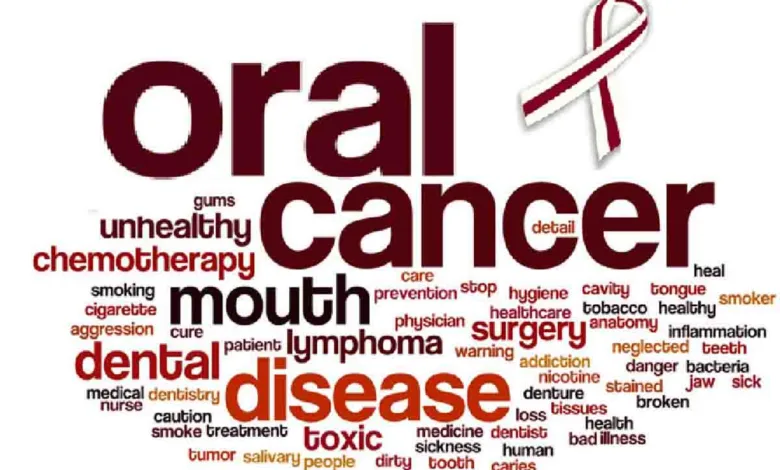Combating oral cancer by combination of understanding, screening & integrating digital possibilities

Thursday, 14 March 2024 | In Guest Column
GUEST COLUMN
 Dr Anshul Chamoli
Dr Anshul Chamoli
Oral cancer, as the name suggests, is the cancer affecting the oral cavity and the back of the throat. It is part of a group of cancers commonly referred to as head and neck cancers and of all head and neck cancers, they comprise about 85% of that category.Oral cancer is the most common cancer in India among men (11.28 per cent of all cancers) and fifth most frequently occurring cancer among women (4.3 per cent of all cancers) while accounting for over 30 per cent of all cancers in the country. Early detection, controlling the risk factors as well as education of the population forms the key to success.
The death rate associated with this cancer is particularly high not because it is hard to discover or diagnose but due to the cancer being routinely discovered late in its development. Oral cancer is particularly dangerous because in its early stages it may not be noticed by the patient as it frequently develops without producing pain or symptoms and because it has a high risk of producing second primary tumors. This means that the patients who survive a first encounter with the disease have up to 20 times higher risk of developing second cancer.
Risk factors include smoking and tobacco chewing. Persons having high alcohol intake combined with tobacco together have a synergistic effect on the occurrence of oral cancers. Other factors are poor oral hygiene, human papilloma virus and chronic trauma to the oral mucosa in the form of a bad dental filling or an ill-fitting denture in the mouth and exposure to UV (ultraviolet) radiation from the sun.
Possible signs and symptoms: It may appear as a white or red ulcer or growths in the mouth, mouth bleeding, loose teeth, pain or difficulty swallowing and voice changes. It is important to have any sore or discolored area of your mouth, which does not heal within 14 days, looked at by a professional.
Early-stage cancers are often asymptomatic and mimic benign conditions, reducing the likelihood for the public to seek care. So, screening provides an opportunity for early detection.
Screening is the test done on apparently healthy individuals to detect potential health disorders or disease. The conventional test applied in most screening programmes is visual oral examination (VOE) which involves a systematic visual inspection and palpation of the oral cavity under a bright light source to detect abnormal oral findings that raise the index of suspicion for oral cancer. Screening, therefore, gives an edge by increasing the detection of cancer in its early stages and raising the survival rates.
Promotion of oral cancer awareness involves population-based programmes, multi-faceted mass media approaches, community-based initiatives and one-to-one interventions. Campaigns in India include screening of high-risk individuals, encouraging oral self-examination and involvement of village health workers in promoting early detection and awareness of head and neck cancers.
Using digital solutions for early detection: Primary health-care workers may be engaged in behavioural interventions for cessation of use of tobacco, areca-nut products or alcohol, conducting visual oral examinations or teaching oral self-examination. All these tasks can be facilitated using digital technologies. For example, visual oral examinations can be accompanied by showing a video on self-examination, oral hygiene and warning signs that should be reported. Portable devices such as tablets may also be used for community education, for spreading awareness, and motivating them to adopt healthier lifestyles.
India’s Ayushman Bharat comprehensive primary health-care initiative is undertaking a population-based noncommunicable diseases programme. The portable devices will also be used to monitor coverage, detect problems and collect feedback. Digital technologies have been essential for strengthening population-based screening training for which in-person training is neither feasible nor economically viable. Information, education and communication strategies should target materials on early detection at different age groups, including school children, adolescents, parents, adults and older people. Digital media sent via text, voice or multimedia messages have a powerful role to play in reaching these different population segments.
For diagnosis, tissue biopsy (gold standard), along with MRI or CT scans to evaluate the spread are used. Treatment of oral cancers is ideally a multidisciplinary approach involving the efforts of surgeons, radiation oncologists, chemotherapy oncologists, dental practitioners, nutritionists and rehabilitation and restorative specialists.
To sum it up, oral cancer is a major public health problem in the Indian subcontinent where the low-income groups in India are affected most due to a wide exposure to risk factors such as tobacco chewing and insufficient exposure to newly diagnostic aids, resulting in a delay in reporting of oral cancer. Promoting awareness of oral cancer, combined with screening of population utilising digital technologies, holds the promise of increase in its survival rates and declining deaths from oral cancer.
(The author is a dental surgeon -endodontist- based in Dehradun. She is currently pursuing MPH from BR University, Delhi.)






